
Plastic Planet Pandemic
by Roman Bystrianyk | Aug 24, 2024
Our governments and their agencies are obsessed with viruses. It seems the WHO and CDC only exist to talk about the next virus and how we will all die unless we follow their orders and use the only hammer in their toolbox – vaccination. With their dogmatic droning, you wouldn’t know about the real problems that exist, such as the obesity pandemic and vitamin D deficiency pandemic, or that over the last 50 years, mainstream medicine has been the third leading cause of death. They also almost completely ignore that we are in a massive plastic pollution pandemic.
You’re enjoying your day at the beach when suddenly a gust of wind blows your plastic bags and plates off of your blanket. You try and catch them as the various pieces lurch erratically across the sand. You recover a few items, but some of them get away and are carried by the breeze down the coast. At the end of the day, a plastic water bottle, a spoon, or two, maybe a shovel or Frisbee, get left behind in the sand.
Plastic products can escape from overflowing trash cans, piles of garbage at municipal and illegal dumps, and through many other circumstances. They make their way through streams, lakes, rivers, and stormwater to the ocean.[1] Styrofoam food containers, sunglasses, bottle caps, drinking straws, beach coolers, fishing lines, and a wide assortment of other consumer products gradually make their way to the ocean, where they are worn down by time and the elements. That bobbing plastic bottle will eventually disappear from view, but its ever smaller long-lived particles will still be in the environment.
Some of these plastic objects may be picked up and thrown out, while some remain exposed to the environment. The sun, wind, and sand slowly do their work, making the plastics more brittle, breaking them down into smaller pieces. Some of these items and smaller fragmented parts make their way into the ocean, where sunlight and wave action continue to break them into smaller and smaller pieces. Through ocean currents, some of this plastic waste collects on distant shores. Many end up in one of the enormous ocean whirlpools where they accumulate and continue to break apart.
Toxins and microbes
The chemical ingredients in 50% of plastics are listed as hazardous by the United Nations Globally Harmonized System of Classification and Labeling of Chemicals.[2] Bisphenol-A, commonly known as BPA, and phthalates are called “everywhere chemicals” because they are widely used in making countless plastic products. Plasticizers are frequently added to increase plastic’s flexibility, flame retardants to reduce the spread of combustion, and colorants and other materials to modify basic plastic properties. Plastics may contain ingredients such as oxybenzone used as an ultraviolet light absorber and stabilizer.[3]
BPA has been recognized since the 1940s as an endocrine-disrupting chemical that interferes with normal hormonal function.[4] Researchers have linked phthalates, which are used as plasticizers, to asthma, attention-deficit hyperactivity disorder, breast cancer, obesity and type II diabetes, low IQ, neurodevelopmental issues, behavioral issues, autism spectrum disorders, altered reproductive development, and male fertility issues.[5] These plastic additives and pollutants might be released when eaten by a wide variety of marine organisms. In 2018, “surprising levels” of phthalates were found in wild bottlenose dolphins, which are high up on the food chain.[6]
Commonly used additives, including phthalates, bisphenol A (BPA), alkylphenols, [and] polybrominated diphenyl ethers are hazardous to biota [ocean animal and plant life] acting as endocrine-disrupting chemicals that can mimic, compete with, or disrupt the synthesis of endogenous [growing within the body] hormones. These compounds have been measured at high concentrations in plastic fragments sampled both at remote and urban beaches, as well as in those floating in the open ocean.[7]
PCBs (polychlorinated biphenyls) and PBDEs (polybrominated diphenyl ethers) were once commonly used as electrical insulators and flame retardants. Although they were banned in the United States in 1979, these substances’ global production is estimated to have been about 1.3 million metric tons. They have been found in high concentrations in crustaceans in the deep ocean.[8] The surface area of microplastics allows them to absorb these pollutants from the surrounding ocean water. Plastic debris accumulates pollutants such as PCBs up to 100,000 to 1,000,000 times the levels found in seawater.[9]
Japanese scientist Yukie Mato demonstrated that plastics bind to chemicals in seawater and concentrates them. DDE (a breakdown product from the insecticide DDT), PCBs, and other endocrine-disrupting chemicals were each found to be one million times more concentrated on plastic beads than the seawater they were placed into.[10] Seabirds that ingested microplastics have been found to have elevated amounts of PCBs and other persistent organic contaminants.[11]
Bacteria and other microbes have been found to also live on microplastic particles. The plastic fragments help to disperse these organisms throughout the environment while the organisms simultaneously influence contaminants leaching from these plastics. A researcher from the National University of Singapore found more than 400 types of bacteria on 275 pieces of microplastic collected from local beaches. They included microbes linked to coral reefs’ bleaching and that cause wound infections and gastroenteritis in humans.[12]
Contaminated food and drink
The dangerous cocktail of pollutants associated with plastics can be transferred to fish and other sea life. When mammals, such as seals or people, eat marine animals that have consumed this marine debris, there is the potential to increase their own burden of these hazardous chemicals.[13] This raises important questions regarding the bioaccumulation and biomagnification of chemicals and the consequences for human health. Recent studies show that humans are ingesting microplastics from seafood, with 100% of mussels sampled from UK coastlines and supermarkets containing microplastics or other debris like cotton and rayon.[14] Scientists believe microplastic consumption by people eating seafood in Britain was likely “common and widespread.”
When consuming an average portion of mussels (250 g wet weight), one consumes around 90 particles. An average portion of 6 oysters (100 g wet weight) contains around 50 particles… European top consumers will ingest up to 11,000 microplastics per year, while minor mollusc consumers still have a dietary exposure of 1,800 microplastics per year. Once inside the human digestive tract, intestinal uptake of the ingested particles may occur.[15]
“This is a wake-up call to the fact that our waste management systems are not as tight and advanced as they should be, and that might be coming back to haunt us through the food chain,” said Chelsea Rochman, a postdoctoral fellow at the University of California, Davis.[16]
As might be expected, plastic contamination is already being found in other places besides seafood. Analysis of a variety of consumer sea salt brands showed they also contain plastics.[17] While the particle amounts found are currently low, smaller particles, which probably will be in even higher concentrations, were not measured due to study limitations. Also, the low detected quantities of plastic are likely to increase significantly over time as ocean plastic loads continue to accumulate and plastics continue to splinter and spread. Microplastics have also been found in 90% of the table salt brands worldwide, with Asian brands having exceptionally high amounts.[18] Through salt alone, the average adult consumes approximately 2,000 microplastic particles per year. Erik van Sebille, an oceanographer at Utrecht University in the Netherlands who studies global ocean circulation and plastic pollution, noted that,
“Over the last few years, whenever scientists have gone out to look for plastic in the ocean, they have almost always found it. Whether on the remote ocean floor, in the ice in the Arctic, in the stomachs of seabirds and fish, or now in sea salt. Plastic in the ocean is an atrocity, a testament to humanity’s filthy habits.”[19]
Sea salt was not only contaminated with plastics but was also tainted with pigments associated with plastics. Examples of pigments found in table salt include victoria blue, commonly used as a coloring agent in polyacrylic fibers, and lead chromate (yellow) dye, a toxic compound with extensive applications in paints and plastic industries. Lead chromate pigment has been associated with cancers, cerebrovascular (brain blood vessels) disease, and nephritis (inflammation of the kidneys) in humans. Researchers recently found microplastic particles in the placentas of unborn babies of healthy women who had normal pregnancies and births.[20] The researchers said was that this was “a matter of great concern.” Elizabeth Salter Green, at the chemicals charity Chem Trust, noted,
Babies are being born pre-polluted. The study was very small but nevertheless flags a very worrying concern.[21]
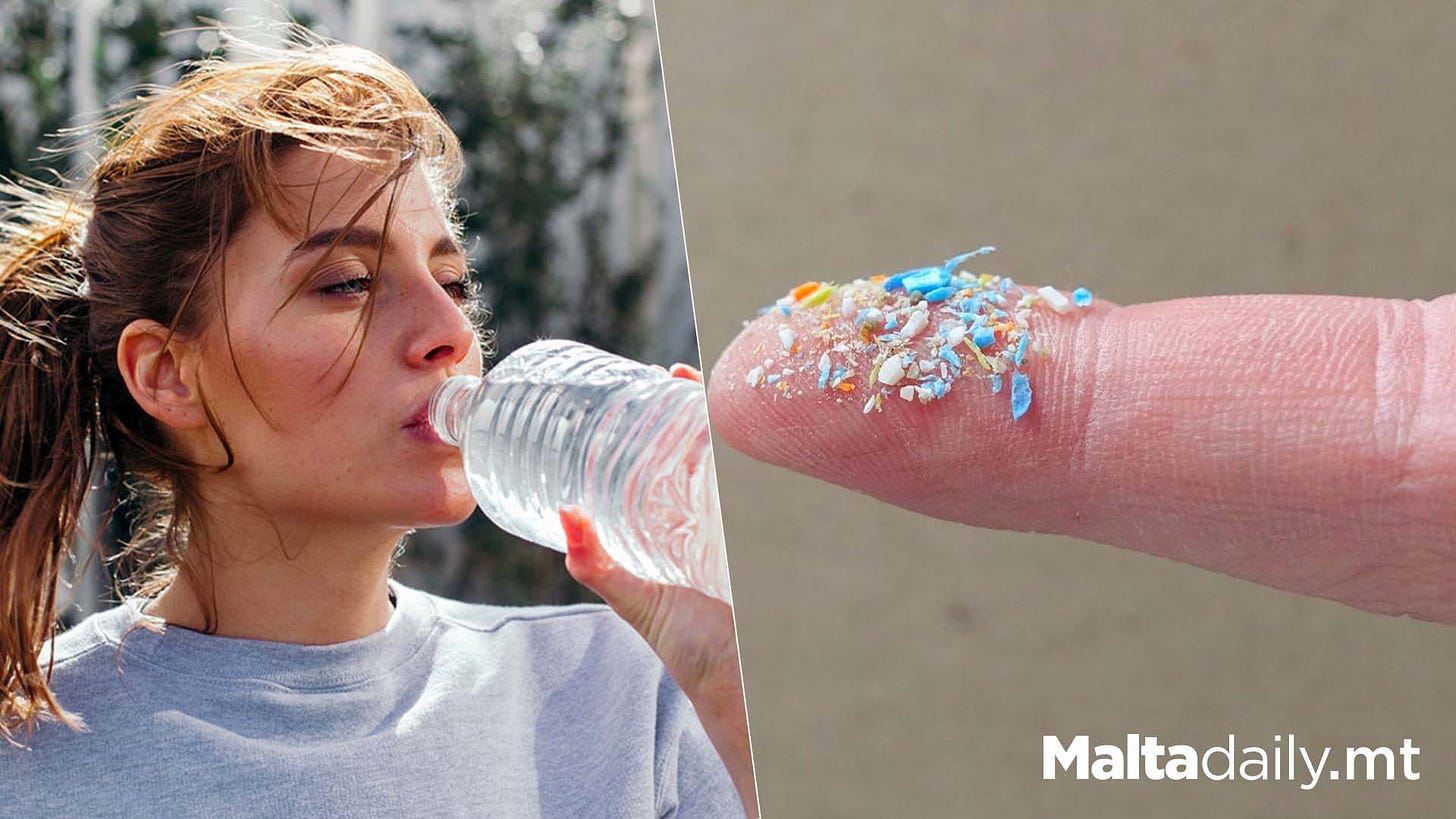
Dr. Sherri Mason collaborated with researchers at the University of Minnesota to examine microplastics in drinking water. Dr. Mason found that Americans could be ingesting upwards of 660 particles of plastic every year. It is thought that the majority of this plastic contamination comes from microfibers and single-use plastics such as water bottles.[22] A small study in 2018 found that microplastics have already been detected in human waste, suggesting they are widespread in the food chain.[23]
A 2017 study found 83% of the world’s tap water is already contaminated with microscopic plastic fibers.[24] The United States had the highest level of contamination at 94% of samples collected at various sites.[25] Another study found that 93% of leading brands of bottled water were contaminated with plastic debris, including nylon, polyethylene terephthalate, and polypropylene, which are used to make bottle caps.[26] Other studies have shown that plastics have spread throughout the aquatic environment and end up in products such as honey[27] and beer.[28]
Other plastic pollution sources
Sources of environmental and aquatic plastic contamination have expanded as more products use plastics. Products like wet wipes, marketed as flushable, add to the load in sewer systems, costing billions of dollars in worldwide maintenance. Because they don’t biodegrade quickly, they can end up among all of the accumulating refuse on beaches.[29] These wet wipes are also made from plastics, which once flushed, break apart into microplastics and add to the world’s environmental plastic burden.[30]
Production of synthetic diapers began in the 1960s. They gained popularity over the following decades, replacing traditional cloth diapers. In 2018, Americans generated an estimated 4,100,000 tons of waste from disposable diapers, accounting for 1.4% of municipal waste.[31]
In the United States, there are about four million babies born every year. During their first year of life, the average newborn uses about 2500 diapers. This means that from babies under one year old, Americans dispose of around a trillion diapers a year.[32]
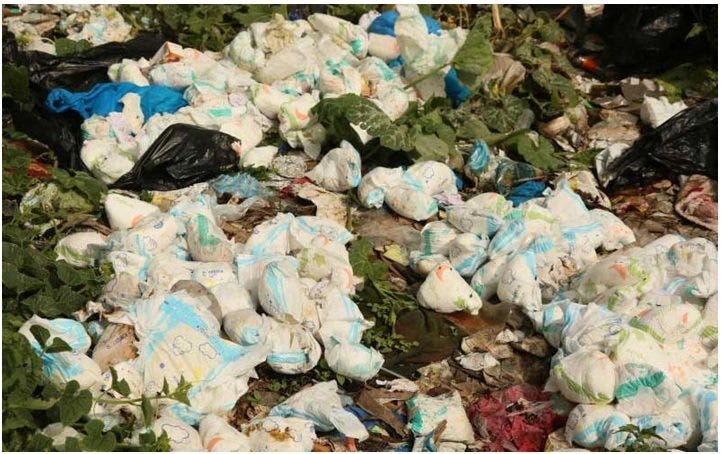
Worldwide, disposable diapers represent about 4% of solid waste and are the third-largest single consumer item in landfills discarded after a single use.[33] These synthetic diapers take hundreds of years to break down, meaning that the diapers you wore as a baby are likely still intact, sitting in a landfill. In addition to the enormous waste generated, disposable diapers contain substances that are harmful to human health and the environment.
Diaper ingredients include tributyltin (TBT) – a biocide used to prevent the growth of bacteria, which is considered highly toxic and poisonous to marine life and humans; dioxins – a group of persistent, highly toxic organic pollutants that are carcinogenic and linked to long-term health problems.
Dioxin is carcinogenic, and had been listed by EPA as the most toxic of all cancer-linked chemicals. Dioxin, in very small quantities (parts per trillion), causes birth defects, skin diseases, liver disease, immune system suppression and genetic damage in laboratory animals consequently, dioxin was banned in many countries of the world… While one may believe that the tiny amount of dioxin exposure from diapers is insignificant, it is however of much concern that a substance reputed as the most carcinogenic chemical known, is found in a baby care product.[34]
Phthalates are synthetic plastic materials that act as liquid absorbents to improve the functionality and softness of diapers and many other products, such as women’s sanitary pads. Some of these plastic materials release volatile organic compounds (VOCs) and endocrine-disrupting chemicals, potentially posing health risks to children who wear them. Phthalates and VOCs are absorbed directly through the skin, so there is an increased public health concern about whether these substances may adversely influence children’s health.[35] Where phthalates are released into the environment, they can create reproductive toxicity in humans and animals.
Synthetic rubber, a variant of plastic, makes up about 60% of the rubber used in car tires. As tires wear down, they emit small dust particles into the air, landing on adjoining surfaces, with an unknown amount carried out to the sea.[36] The total amount of microplastics generated from the wear of automotive tires in the EU alone is estimated at 503,500 metric tons (555,000 tons) per year or over 4,300 blue whales’ worth.[37] Microplastics from tires and roads were found to make up 89% of the ultra-fine particles found in the air around busy motorways.[38] A 2019 study found an estimated 7 trillion pieces of microplastics flow into the San Francisco Bay via stormwater drains alone.[39] Nearly half of these particles found in stormwater looked suspiciously like tiny fragments of car tires, which rainfall washes off the streets and into waterways.
Another primary source of plastic pollution is nurdles. Nurdles are tiny pellets of plastic resin that manufacturers use to create plastic packaging and products. Billions are lost every year, ending up in waterways. They are the second-largest source of microplastic pollution in water after the amount generated from vehicle tires.[40] A 2018 study estimated that between 3 million to 36 million pellets may escape every year from just one small industrial area in Sweden. When smaller particles were considered, the number of particles released is a hundred times greater.[41]
Synthetic textiles, such as polyester and acrylic, also slowly break down while washing and drying clothes. A Plymouth University study showed that more than 700,000 microscopic fibers could be released into wastewater during each use of a domestic washing machine. Many of these are likely to pass through sewage treatment and into the environment.[42] A study in California found that in 2019 an estimated 13.3 quadrillion fibers (4,000 metric tons equal to the weight of 2,600 cars) were released into California’s natural environment.[43] The 13.3 quadrillion figure is 130,000 times as many fibers as stars in the Milky Way galaxy. These fibers are primarily shed when articles such as yoga pants, stretchy jeans, and fleece jackets are repeatedly washed. Up to 40% of these microfibers pass through wastewater treatment plants and end up in rivers, lakes, and oceans, with 85% of the world’s plastic debris containing some percentage of this waste.[44]
Plastic Armageddon
Although the plastic garbage patches and marine debris are not precisely quantifiable in all aspects, they are a symptom of a root problem, which is plastic end-of-life use. The microplastic endgame is not the ocean garbage patches, but ultimately it is the interaction with the entire ocean ecosystem. Los Angeles Captain Charles Moore, an environmental advocate, credited with bringing attention to the Great Pacific Garbage Patch, noted that,
The ocean is like a plastic soup, bulked up with the croutons of these larger items. It’s like a toilet bowl that swirls but doesn’t flush.[45]
With global plastic production doubling every 11 years, during those 11 years, people will make as much plastic as has been produced since plastic was invented.[46] A 2017 Ellen MacArthur Foundation report shows that by 2050 plastics will consume 20% of all oil production, up from 5% today. One out of every five barrels of oil will not fuel or lubricate our machines but will be used to make plastic. The report states that at least 8 million metric tons of plastic waste enter the oceans each year. If action is not taken by 2050, there will be more plastic in the sea than fish, weighing 850 million metric tons (937 million tons)[47] or equal to over 2,500 Empire State Buildings or over 550 million cars. Those 550 million cars placed bumper to bumper would wrap around the Earth over 66 times.
Each year, at least 8 million tonnes of plastics leak into the ocean — which is equivalent to dumping the contents of one garbage truck into the ocean every minute. If no action is taken, this is expected to increase to two per minute by 2030 and four per minute by 2050. Estimates suggest that plastic packaging represents the major share of this leakage. In a business-as-usual scenario, the ocean is expected to contain 1 tonne of plastic for every 3 tonnes of fish by 2025, and by 2050, more plastics than fish (by weight).[48]
We are facing an ever-swelling tsunami of plastic waste that is difficult to imagine. Measurements from the most contaminated regions of the world’s oceans show that the mass of plastics already exceeds that of plankton sixfold.[49] The potential for biomagnification of plastic particulates in the environment is of significant concern for life all the way up on the food chain, biosecurity, and, ultimately, human health.
Despite numerous laws, regulations, and cleanup efforts, plastic-dominated marine debris appears to be ever expanding, and hence, so is the magnitude of the resulting problems. This plastic load of pollution not only reaches our oceans, but a large portion of this debris ends up on, or buried in, the seafloor. The potential is there for an unseen pervasive impact on deep-marine ecosystems.
The looming plastic catastrophe is something we need to tackle in a globally comprehensive way. Even if 100% of plastics in the Western world were truly recycled, the number of plastics flooding the oceans from the developing world would still be overwhelming. Globally, there are almost 2.8 billion people without access to waste collection services, of which 1.9 billion live in rural areas, generating large amounts of uncollected household waste ending up in surrounding water bodies, open dumps, or burnt in open-fire activities.[50] We need to work together as one human community to solve this massive mismanagement of waste materials across the planet. What is needed is a global plan to properly collect trash, recycle whatever can be, and keep it from inundating the environment.
With the sea covering over 73% of our world, it is not physically practical to remove all the existing plastic debris. With more than 90% of plastics in the ocean being less than 10 millimeters long,[51] it really becomes an impossible task. So instead, we must find ways to change our continuing impact because we can’t significantly alter the enormous damage that has already been done.
Because of our modern obsession with convenient single-use items, we will be eating, drinking, and breathing in plastic product remnants and their toxins for decades and centuries to come. We must substantially decrease plastics use, especially these single-use types, which is nearly half of all plastics manufactured today. We must also think of better ways to intercept and capture all plastics before they infiltrate the marine environment. If we don’t take action, the problems will persist, continue to escalate, and become increasingly hopeless, with potentially disastrous consequences for all life on this planet.
What you can do!
Plastic pollution is a worldwide crisis. If we work together, we can really make a difference and solve this problem. Here are some simple steps that you can take at a personal level to make a difference.
Switch from bottled water – Use glass or stainless steel bottles and refill from a filtered tap water source. According to a 2009 article in Environmental Research Letters, bottled water takes as much as 2,000 times the energy cost of producing tap water. In 2007, in the United States, about 33 billion liters of bottled water were consumed “equivalent to between 32 and 54 million barrels of oil or a third of a percent of total US primary energy consumption.”[i]
Switch from other drinks that come in plastic bottles – Make your own drinks at home, such as fruit smoothies or juices, which are also much healthier alternatives than sodas, and place them into your reusable bottle. According to the Harvard School of Public Health, sugary drinks are calorie-rich and devoid of nutrition. “Beyond weight gain, routinely drinking these sugar-loaded beverages can increase the risk of type 2 diabetes, heart disease, and other chronic diseases. Furthermore, higher consumption of sugary beverages has been linked with an increased risk of premature death.”[ii]
Switch to a reusable travel mug for hot drinks – According to the Environmental Protection Agency (EPA), 25 billion Styrofoam cups are thrown out each year. Styrofoam cups are not biodegradable and cannot be recycled, and they will still be sitting in landfills in 500 years.[iii] The plastic cup lids and stirrers are also not recycled. Paper cups are lined with a plastic coating, so they don’t leak, which also means they can’t be recycled. Billions of them ending up in landfills each year. Instead, use a stainless steel travel mug. Better yet, break free of the “on-the-go” culture and consider having your coffee or tea at home or at a sit-down café instead of taking it with you.
Switch from plastic straws – A plastic straw – It’s something that comes with most beverages we order, from soft drinks to even a glass of water. In the United States, Americans use them at an average rate of 1.6 straws per person per day, which equals 175 billion straws a year used once and thrown out.[iv] Most of us can simply do without this frill, but there are plenty of alternatives for those that need them – straws made of metal, paper, and even actual straw.
Use reusable utensils – An estimated 40 billion individual plastic utensils are produced each year. With low reuse and recycling rates, most of them end up in our landfills, beaches, and oceans.[v] Instead of plastic forks, spoons, and knives, carry one of the many sets of reusable utensils made from bamboo or stainless steel.
Use reusable shopping and produce bags – Plastic bags are an eyesore as they end up as litter in our parks, forests, and beaches. These single-use bags are made from fossil fuels and end up as deadly waste in landfills and the ocean. It only takes about 14 plastic bags to equal the amount of gas required to drive one mile.[vi] Instead, use reusable hemp, cotton, or other cloth bags for groceries and other shopping. For produce, leave it loose for items like avocadoes and onions. For other things, use reusable mesh produce bags.
Purchase products in bulk – Many products such as fresh meat, grains, and condiments can be purchased from providers that offer their products in bulk. This takes a little more planning to provide your own containers and pantry for freezer storage space at home, but once the habit develops, it is remarkable how much plastic packaging can be avoided this way.
Use your own take-out food containers – Pack lunches and bring containers to restaurants so you can pack your own leftovers into reusable containers made from stainless steel or glass with snap-on lids.
Switch to bars of shampoo and conditioner – Shampoo and conditioner bars eliminate the need for plastic bottles. Most bars come wrapped in recycled paper or in paper boxes. Most bottled shampoos are 80% water, and conditioners can be up to 95% water. Shampoo and conditioner bars are concentrated and generally last longer than bottled versions. On average, a shampoo bar will outlast two to three bottles of liquid shampoo.[vii]
Switch from using toothpaste tubes – Toothpaste tubes are, for the most part, not recycled, with more than a billion of them ending up in landfills every year. Use toothpaste tablets that come in glass jars, or you can also make your own tooth powder out of natural ingredients such as baking soda.
Switch to natural fibers for clothing – We often don’t think of our clothing as plastic, but polyester, made from petroleum, is now used in about 60% of our clothes.[viii] When synthetic fabrics are washed, they release tiny strands called microfibers, which end up everywhere in the environment. Switch to organic cotton, hemp, and linen, which are natural materials used to make clothing for thousands of years.
Avoid seafood – Over a ton of lost plastic fishing gear, also known as “ghost gear,” ends up in the ocean every minute, which is destroying sea life on a massive scale. According to the Independent, “the world’s biggest seafood firms are all contributing to the deaths of more than 100,000 whales, dolphins, seals, turtles, and seabirds that are killed in agony every year by discarded fishing equipment.”[ix] Moving away from eating seafood will reduce demand and lessen the damage caused by highly destructive industrial fishing practices.
Breastfeed – Plastic bottles release microplastics and nanoplastics. Although the impact on health isn’t clear, to avoid any problems, breastfeed when possible. Breastfeeding provides the best nutrition for a baby and is the most widely recommended way to feed a newborn.[x] When breastfeeding is not possible, consider using glass bottles.
Use modern cloth diapers –Disposable baby diapers have primarily replaced older cloth diapers mainly due to perceived advantages, principally convenience. However, very little attention is given to the product after its use and its potential adverse health effects. Modern cloth diapers are washable and reusable. All diapers impact the environment; however, using cloth diapers and washing a full load and line drying is the most sustainable option. Cloth diapers can have flushable liners that can still add to landfills. Diaper liners are used to make diaper changes easier but are not essential. Cloth diapers are free of harmful chemicals and plastics for a healthier baby. If you need to use disposable diapers, there are biodegradable options available.
Quit smoking – This helps cut down on the massive amount of toxic cigarette butts entering the environment and eliminates a significant cause of lung cancer. Also, the discarded cigarette filters are of dubious benefit in actually reducing diseases in smokers. According to a 2009 article in the International Journal of Environmental Research and Public Health, “cigarette filters are primarily a marketing tool to help sell ‘safe’ cigarettes” which have little “scientific evidence, including patterns of mortality from smoking-caused diseases, does not indicate a benefit to public health from changes in cigarette design and manufacturing over the last fifty years.”[xi]
Innovate! – For every problem, there are many solutions. Human ingenuity and creativity are boundless when it comes to almost any situation. You may have a great idea to tackle this serious issue. Let your ideas blossom and work with others to make them a reality. Every positive change makes a difference.
Subscribe to Roman Bystrianyk
[ii] “Sugary Drinks,” Harvard School of Public Health, https://www.hsph.harvard.edu/nutritionsource/healthy-drinks/sugary-drinks
[iii] “The Throwaway Generation: 25 Billion Styrofoam Cups a Year,” Environmental Magazine, https://emagazine.com/the-throwaway-generation-25-billion-styrofoam-cups-a-year
[iv] “Glass straws? Straw straws? Here are some eco-friendly alternatives to plastic,” USA Today, https://www.usatoday.com/story/money/nation-now/2018/05/23/sustainable-alternatives-plastic-straws-recyling/632993002
[v] Nancy Trent, “Ending Take Out Waste,” Wholefood Magazine, January 34, 2011, https://wholefoodsmagazine.com/blog/ending-take-out-waste
[vi] “The problem with plastic bags,” Center for Biological Diversity, https://www.biologicaldiversity.org/programs/population_and_sustainability/sustainability/plastic_bag_facts.html
[vii] Amanda Ogle, “4 Reasons to Ditch Your Shampoo Bottle for a Bar,” National Geographic, August 14, 2018, https://www.nationalgeographic.com/travel/lists/travel-gear/shampoo-bar-sustainable-toiletries-plastic-free
[viii] Kirsten Brodde, “What are microfibers and why are our clothes polluting the oceans?” Greenpeace, March 2, 2017, https://www.greenpeace.org/international/story/6956/what-are-microfibers-and-why-are-our-clothes-polluting-the-oceans
[ix] Jane Dalton, “Seafood giants ‘let thousands of whales, dolphins and seals die in agony each year from discarded fishing equipment’,” The Independent, March 8, 2018, https://www.independent.co.uk/news/world/seafood-firms-discarded-lost-fishing-equipment-thousands-whales-dolphins-seals-die-plastic-pollution-a8244181.html
[x] “Breast-feeding vs. formula-feeding: What’s best?” Mayo Clinic, https://www.mayoclinic.org/healthy-lifestyle/infant-and-toddler-health/in-depth/breast-feeding/art-20047898
[xi] Thomas E. Novotny, et al., “Cigarettes Butts and the Case for an Environmental Policy on Hazardous Cigarette Waste,” International Journal of Environmental Research and Public Health, 2009, pp. 1691-1705, doi:10.3390/ijerph6051691
Parts of this article are from my new book, Moving Back From Midnight, which is available on Amazon. https://movingbackfrommidnight.com/
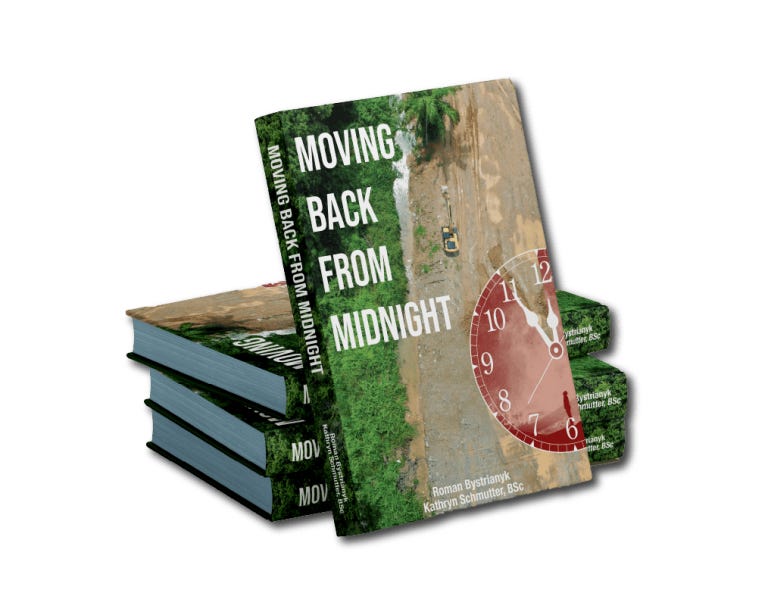
[1] Peter G. Ryan, et al., “Monitoring the abundance of plastic debris in the marine environment,” Philosophical Transaction of the Royal Society B, 2009, vol. 364, p. 2008, doi:10.1098/rstb.2008.0207
[2] “Plastic Plague in Our Oceans,” Science In Society, Spring 2015, issue 65, p. 7.
[3] “2-Hydroxy-4-methoxybenzophenone,” PubChem, https://pubchem.ncbi.nlm.nih.gov/source/hsdb/4503
[4] “Perils of plastics? Survey of risks to human health and the environment,” Science News, March 20, 2010, https://www.sciencedaily.com/releases/2010/03/100319115631.htm
[5] Amy Westervelt, “Phthalates are everywhere, and the health risks are worrying. How bad are they really?” The Guardian, February 10, 2015, https://www.theguardian.com/lifeandstyle/2015/feb/10/phthalates-plastics-chemicals-research-analysis
[6] Sarah Gibbens, “Chemicals From Plastics, Cosmetics Found in Wild Dolphins,” National Geographic, September 7, 2018, https://www.nationalgeographic.com/animals/2018/09/news-dolphins-plastic-chemical-traces-found
[7] C.G. Avio, et al., “Plastics and microplastics in the oceans: From emerging pollutants to emerged threat,”Marine Environmental Research, 2016, p. 5, http://dx.doi.org/10.1016/j.marenvres.2016.05.012
[8] Paul Rincon, “Banned chemicals persist in deep ocean,” BBC News, February 13, 2017, http://www.bbc.com/news/science-environment-38957549
[9] “What We Know About: Plastic Marine Debris,” NOAA (National Oceanic and Atmospheric Administration) Marine Debris Program, http://marinedebris.noaa.gov/info/plastic.html
[10] Watershed Discipleship: Reinhabiting Bioregional Faith and Practice, 2016
[11] Victoria A. Sleight, et al., “Assessment of microplastic-sorbed contaminant bioavailability through analysis of biomarker gene expression in larval zebrafish,” Marine Pollution Bulletin, 2016, http://dx.doi.org/10.1016/j.marpolbul.2016.12.055
[12] Neo Chai Chin, “Toxic bacteria found on small pieces of plastic trash from S’pore beaches,” Today, February 11, 2019, https://www.todayonline.com/singapore/toxic-bacteria-found-small-pieces-plastic-trash-singapores-beaches
[13] Chelsea M. Rochman, et al., “Anthropogenic debris in seafood: Plastic debris and fibers from textiles in fish and bivalves sold for human consumption,” Nature Scientific Reports, 2015, pp. 1-2, DOI: 10.1038/srep14340
[14] Josh Gabbatiss, “All UK mussels contain plastic and other contaminants, study finds,” The Independent, June 8, 2018, https://www.independent.co.uk/environment/mussels-plastic-microplastic-pollution-shellfish-seafood-oceans-uk-a8388486.html
[15] Lisbeth Van Cauwenberghe and Colin R. Janssen, “Microplastics in bivalves cultured for human consumption,” Environmental Pollution, 2014, vol. 193, pp. 65-70, http://dx.doi.org/10.1016/j.envpol.2014.06.010
[16] Steph Yin, “Your seafood might contain tiny plastic particles – Is ‘Trash to Table’ the next dining trend?” Popular Science, September 24, 2015, http://www.popsci.com/your-seafood-might-contain-tiny-plastic-particles
[17] Ali Karami, et al., “The presence of microplastics in commercial salts from different countries,” Scientific Reports, April 2017, DOI: 10.1038/srep46173
[18] Laura Parker, “Microplastics found in 90 percent of table salt,” National Geographic, October 17, 2018, https://relay.nationalgeographic.com/proxy/distribution/public/amp/environment/2018/10/microplastics-found-90-percent-table-salt-sea-salt
[19] Michael Allen, “There’s Probably Plastic in Your Sea Salt,” Hakai Magazine, May 8, 2017, https://hakaimagazine.com/news/theres-probably-plastic-your-sea-salt
[20] Damian Carrington, “Microplastics revealed in the placentas of unborn babies,” The Guardian, December 22, 2020, https://www.theguardian.com/environment/2020/dec/22/microplastics-revealed-in-placentas-unborn-babies
[21] Damian Carrington, “Microplastics revealed in the placentas of unborn babies,” The Guardian, December 22, 2020, https://www.theguardian.com/environment/2020/dec/22/microplastics-revealed-in-placentas-unborn-babies
[22] Damian Carrington, “Microplastics revealed in the placentas of unborn babies,” The Guardian, December 22, 2020, https://www.theguardian.com/environment/2020/dec/22/microplastics-revealed-in-placentas-unborn-babies
[23] Rob Picheta, “Microplastics found in human stools, research finds,” CNN, October 23, 2018, https://www.cnn.com/2018/10/23/health/microplastics-human-stool-pollution-intl/index.html
[24] Kevin Lui, “Plastic Fibers Are Found in 83% of the World’s Tap Water, a New Study Reveals,” Time Magazine, September 6, 2017, http://time.com/4928759/plastic-fiber-tap-water-study
[25] Damian Carrington, “Plastic fibres found in tap water around the world, study reveals,” The Guardian, September 5, 2017, https://www.theguardian.com/environment/2017/sep/06/plastic-fibres-found-tap-water-around-world-study-reveals
[26] Pam Wright, “World’s Leading Brands of Bottled Water Loaded With Microplastics, Study Says,” Weather.com, March 16, 2018
[27] Gerd Liebezeit and Elisabeth Liebezeit, “Origin of Synthetic Particles in Honeys,” June 2015, Polish Journal of Food and Nutrition Sciences, vol. 65, no. 2, pp. 143–147, DOI: https://doi.org/10.1515/pjfns-2015-0025
[28] Gerd Liebezeit and Elisabeth Liebezeit, “Synthetic particles as contaminants in German beers,” Food Additives & Contaminants: Part A, 2014, vol. 31, no. 9, pp. 1574-1578, http://dx.doi.org/10.1080/19440049.2014.945099
[29] Karl Mathiesen, “Wet wipes found on British beaches up more than 50% in 2014,” The Guardian, March 19, 2015, https://www.theguardian.com/environment/2015/mar/19/dont-flush-wet-wipes-toilet-conservationists
[30] “Facts and Figures about Materials, Waste and Recycling: Disposable Diapers,” EPA (Environmental Protection Agency), https://www.epa.gov/facts-and-figures-about-materials-waste-and-recycling/nondurable-goods-product-specific-data#DisposableDiapers
[31] “Facts and Figures about Materials, Waste and Recycling: Disposable Diapers,” EPA (Environmental Protection Agency), https://www.epa.gov/facts-and-figures-about-materials-waste-and-recycling/nondurable-goods-product-specific-data#DisposableDiapers
[32] “The Harmful Effects of Disposable Diapers,” Unsustainable Magazine, https://www.unsustainablemagazine.com/the-effects-of-disposable-diapers-on-the-environment-and-human-health
[33] Mfon Emmanuel Ntekpe, et al., “Disposable Diapers: Impact of Disposal Methods on Public
Health and the Environment,” American Journal of Medicine and Public Health, November 30, 2020.
[34] Mfon Emmanuel Ntekpe, et al., “Disposable Diapers: Impact of Disposal Methods on Public
Health and the Environment,” American Journal of Medicine and Public Health, November 30, 2020.
[35] CJ Park, R. Barakat, A. Ulanov, et al. “Sanitary pads and diapers contain higher phthalate contents than those in common commercial plastic products,” Reproductive Toxicology, March 2019, pp.114-121, doi:10.1016/j.reprotox.2019.01.005
[36] Helen Briggs, “Plastic from tyres ‘major source’ of ocean pollution,” BBC News, February 22, 2017, http://www.bbc.com/news/science-environment-39042655
[37] Simon Hann, et al., “Investigating options for reducing releases in the aquatic environment of microplastics emitted by (but not intentionally added in) products,” ICF, February 23, 2018, p. 12.
[38] Victoria Bell, “Microplastics from tyres and roads which end up in the ocean make up 89% of ultra fine particles found in the air around busy motorways,” Daily Mail, November 13, 2018, https://www.dailymail.co.uk/sciencetech/article-6384713/Particles-brake-systems-tires-roads-produce-microplastics-end-ocean.html
[39] Maanvi Singh, “‘Everywhere we looked’: trillions of microplastics found in San Francisco bay,” The Guardian, October 4, 2019, https://www.theguardian.com/environment/2019/oct/04/san-francisco-microplastics-study-bay
[40] Eric Roston, “There’s a Tiny Plastic Enemy Threatening the Planet’s Oceans,” Bloomberg, January 11, 2019, https://www.bloomberg.com/news/articles/2019-01-11/there-s-a-tiny-plastic-enemy-threatening-the-earth-s-oceans
[41] “Industry is leaking huge amounts of microplastics, Swedish study shows,” Science Daily, February 20, 2018, https://www.sciencedaily.com/releases/2018/02/180220124546.htm
[42] Alan Williams, “Washing clothes releases thousands of microplastic particles into environment, study shows,” Plymouth University News, September 27, 2016, https://www.plymouth.ac.uk/news/washing-clothes-releases-thousands-of-microplastic-particles-into-environment-study-shows
[43] Katharine Gammon, “Groundbreaking study finds 13.3 quadrillion plastic fibers in California’s environment,” The Guardian, October 15, 2020, https://www.theguardian.com/us-news/2020/oct/16/plastic-waste-microfibers-california-study
[44] Leah Messinger, “How your clothes are poisoning our oceans and food supply,” The Guardian, June 20, 2016, https://www.theguardian.com/environment/2016/jun/20/microfibers-plastic-pollution-oceans-patagonia-synthetic-clothes-microbeads
[45] “Conservationists say sea garbage is hindering the search for missing Malaysia Airlines plane MH370,” Courier Mail, April 2 2014, http://www.couriermail.com.au/news/conservationists-say-sea-garbage-is-hindering-the-search-for-missing-malaysia-airlines-plane-mh370/news-story/21e328976305c1392ee8a8d1f4243ea1
[46] Laura Parker, “Nearly Every Seabird on Earth Is Eating Plastic,” National Geographic, September 2, 2015, https://news.nationalgeographic.com/2015/09/15092-plastic-seabirds-albatross-australia
[47] Harrington, Rebecca, “By 2050, the oceans could have more plastic than fish,” Business Insider, January 26, 2017, https://www.businessinsider.com/plastic-in-ocean-outweighs-fish-evidence-report-2017-1
[48] “The New Plastics Economy- Rethinking the future of plastics,” Ellen MacArthur Foundation, 2017, https://www.ellenmacarthurfoundation.org/publications/the-new-plastics-economy-rethinking-the-future-of-plastics
[49] “Perils of plastics? Survey of risks to human health and the environment,” Science News, March 20, 2010, https://www.sciencedaily.com/releases/2010/03/100319115631.htm
[50] Mihai Florin-Constantin, “One Global Map but Different Worlds: Worldwide Survey of Human Access to Basic Utilities,” Human Ecology, June 2017, vol. 45, issue 3, pp. 425-429, doi:10.1007/s10745-017-9904-7
[51] Katherine J. Wu, “Ocean Life Eats Tons of Plastic—Here’s Why That Matters,” National Geographic, August 16, 2017, https://news.nationalgeographic.com/2017/08/ocean-life-eats-plastic-larvaceans-anchovy-environment



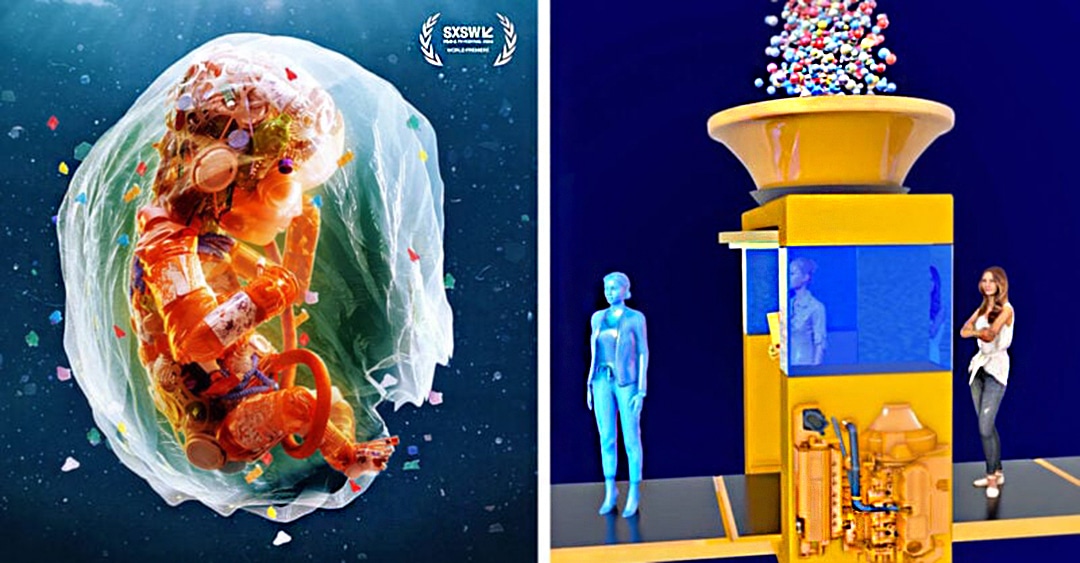
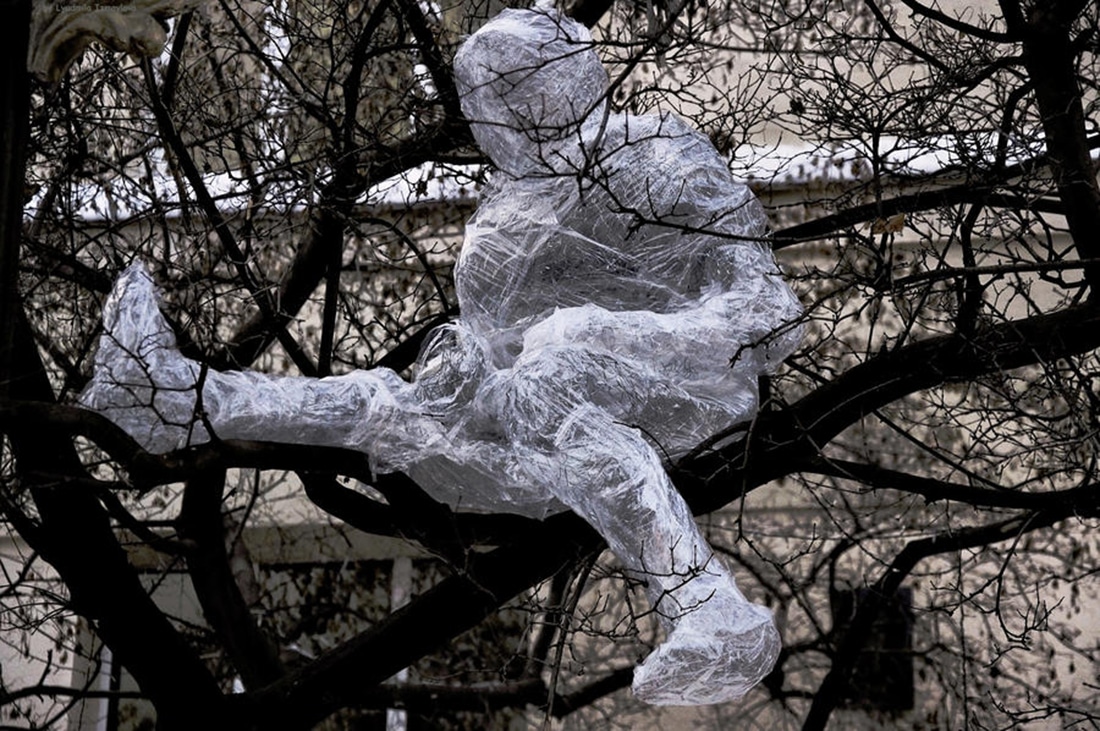
0 Comments